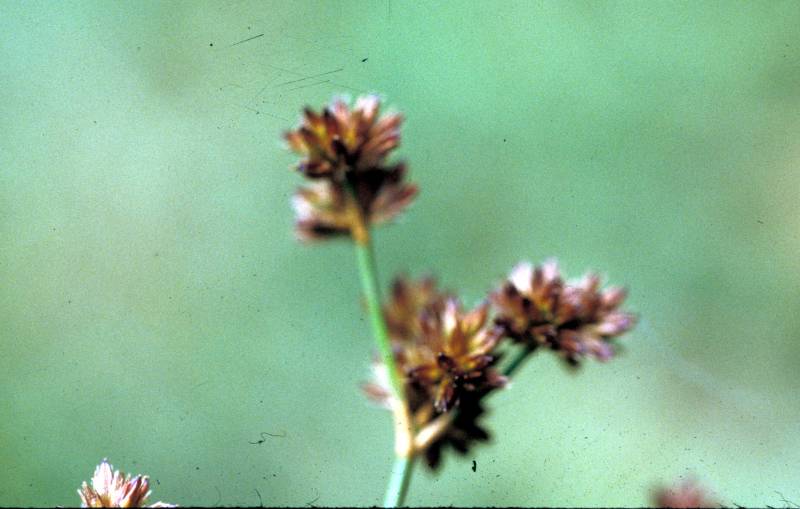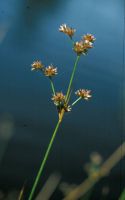Distribution: Occurring west of the Cascades crest in Washington; also in Oregon, otherwise widespread east of the Mississippi River.
Habitat: Brackish swamps, acid bogs, tidal flats and beaches.
Flowers: June - July
Origin: Introduced from eastern North America
Growth Duration: Perennial
Conservation Status: Not of concern
Pollination: Wind
Tufted perennials, the stems erect, smooth, 3-10 dm. tall.
Leaves alternate, 1 basal and 2 cauline, the blades terete, 7-22 cm. long and 1-3 mm. broad; leaf bases sheathing, forming rounded, scarious auricles about 1 mm. long.
Inflorescence a panicle or raceme with 3-50 heads, 2-20 cm. long, the branches ascending, the heads 5- to 50-flowered; outer 3 tepals 2.7-3.8 mm. long, the inner 3 tepals slightly longer, all green or straw-colored to reddish-brown, lanceolate; stamens usually 3.
Capsule lanceolate, 3.3-4.5 mm. long, chestnut brown, acute.
Publication: Essai Monogr. Jonc. 46. 1825. 1825.
Juncus canadensis J. Gay ex Laharpe var. sparsiflorus Fernald
Juncus longicaudatus (Engelm.) Mack.
Juncus polycephalus Michx. var. paradoxus Torr.
PNW Herbaria: Specimen records of Juncus canadensis in the Consortium of Pacific Northwest Herbaria database.
WA Flora Checklist: Juncus canadensis checklist entry.
OregonFlora: Juncus canadensis information.
E-Flora BC: Juncus canadensis atlas page.
CalPhotos: Juncus canadensis photos.
USDA Plants: Juncus canadensis information.





